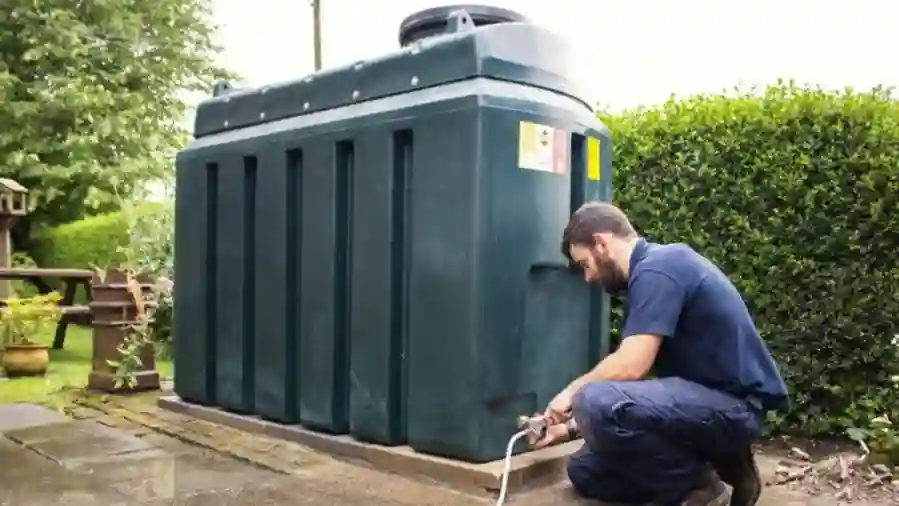
Eco-Friendly Excavation: Green Practices in Oil Tank Removal
As environmental consciousness grows, homeowners are increasingly seeking eco-friendly solutions for various aspects of home maintenance. Oil tank removal, a process that inherently poses environmental risks, is no exception. “Eco-Friendly Excavation” explores green practices in oil tank removal, providing insights into environmentally conscious approaches that prioritize sustainability and minimize ecological impact.
1. The Environmental Challenge of Oil Tank Removal: Recognizing the Impact
Oil tank removal can pose environmental challenges, from potential soil and groundwater contamination to the release of harmful substances into the ecosystem. Recognizing the environmental impact is the first step in embracing eco-friendly excavation practices. Homeowners are increasingly acknowledging the importance of adopting green strategies to mitigate these risks.
2. Pre-Removal Environmental Assessment: Setting the Green Foundation
Eco-friendly excavation begins with a comprehensive pre-removal environmental assessment. Soil and groundwater testing are integral components of this process, helping to identify any existing contamination and set the foundation for green removal strategies. Understanding the environmental landscape allows professionals to implement measures that minimize ecological impact during the excavation process.
3. Choosing Sustainable Removal Methods: Balancing Efficiency and Eco-Friendliness
Selecting sustainable removal methods is a key aspect of eco-friendly excavation. The goal is to balance efficiency with environmental considerations. In-place abandonment, where the tank is filled with an inert material, and complete extraction are common methods. The choice depends on factors such as tank condition, location, and the potential for environmental impact, ensuring a green approach to the removal process.
4. Biodegradable Cleaning Agents: Minimizing Chemical Footprints
Cleaning the tank’s interior is a necessary step in the removal process, and adopting biodegradable cleaning agents minimizes chemical footprints. Traditional cleaning agents can introduce harmful substances into the environment, but eco-friendly alternatives break down naturally, reducing the risk of ecological impact. Biodegradable cleaning agents contribute to a more sustainable and eco-friendly oil tank removal process.
5. Safe Pumping and Transfer: Preventing Oil Spills
Eco-friendly excavation prioritizes safe pumping and transfer methods to prevent oil spills. Utilizing advanced pumping technologies that minimize the risk of spills ensures that the extraction process is as clean and eco-friendly as possible. Additionally, any extracted oil is carefully collected and disposed of in accordance with environmental regulations, preventing contamination and promoting green practices.
6. Precision Excavation Practices: Preserving Biodiversity
During site excavation, eco-friendly practices focus on preserving biodiversity. Precision excavation techniques and the use of protective barriers prevent soil erosion and minimize disruption to plants and wildlife. By prioritizing the preservation of the natural environment, eco-friendly excavation ensures that the removal process is conducted with a commitment to sustaining the delicate balance of ecosystems.
7. Renewable Energy Utilization: Powering the Excavation Sustainably
Incorporating renewable energy sources into the excavation process is a forward-thinking approach to eco-friendly practices. Solar or wind-powered equipment can be used to reduce reliance on traditional energy sources, lowering the carbon footprint of the excavation process. Sustainable energy solutions align with the broader goals of minimizing environmental impact and promoting green practices in oil tank removal.
8. Post-Removal Remediation: Restoring Environmental Harmony
Eco-friendly excavation extends beyond the removal process to post-removal remediation. If soil or groundwater contamination is detected, green remediation measures are implemented to restore environmental harmony. Natural and eco-friendly remediation techniques, such as phytoremediation using plants that absorb contaminants, contribute to the sustainable recovery of affected areas.
9. Recycling and Responsible Disposal: Minimizing Waste Impact
Responsible disposal of materials is a crucial component of eco-friendly excavation. Whenever possible, components of the tank are recycled to minimize waste impact. Metal tanks, for example, can be repurposed, contributing to the circular economy and reducing the demand for new raw materials. By adopting green disposal practices, homeowners contribute to a more sustainable approach to oil tank removal
10. Educating Homeowners: Fostering Green Practices
A crucial aspect of eco-friendly excavation is educating homeowners about the environmental impact of oil tanks and the importance of green removal practices. By fostering environmental responsibility, homeowners become partners in ensuring a sustainable future. Educational initiatives raise awareness about the benefits of eco-friendly oil tank removal and encourage the adoption of green practices in home maintenance.
Conclusion:
Eco-friendly excavation in oil tank removal represents a conscientious approach to environmental responsibility. From pre-removal assessments and sustainable removal methods to biodegradable cleaning agents, precision excavation practices, and post-removal remediation, these green strategies contribute to a more sustainable and ecologically friendly removal process. By adopting eco-friendly excavation practices and fostering environmental responsibility, homeowners play a crucial role in safeguarding ecosystems and promoting a greener future.